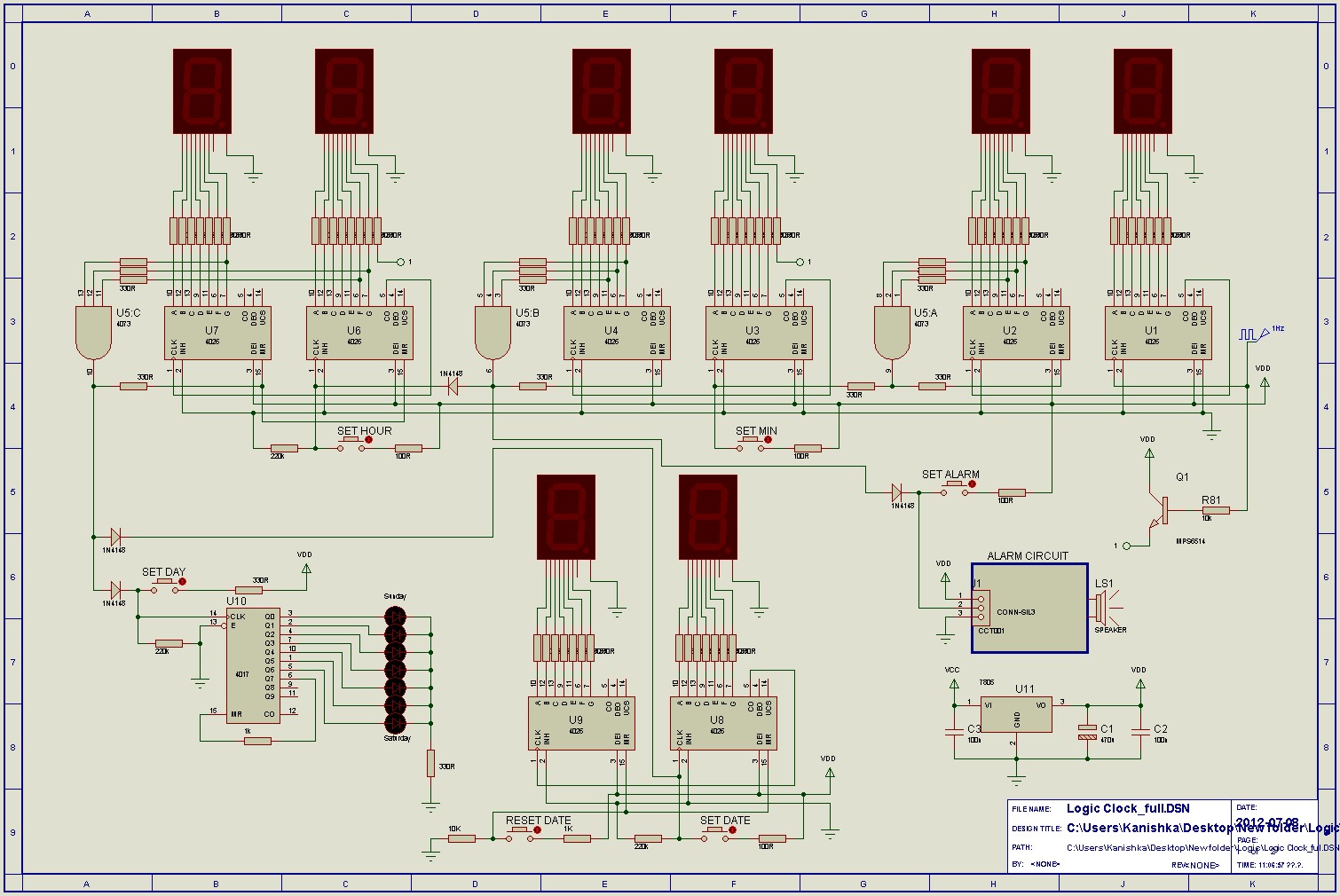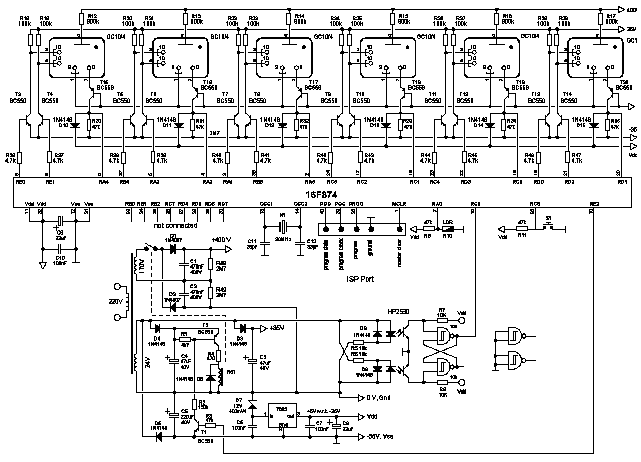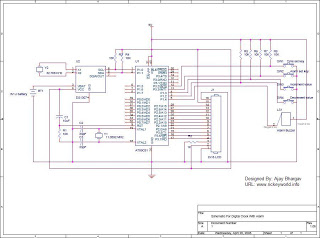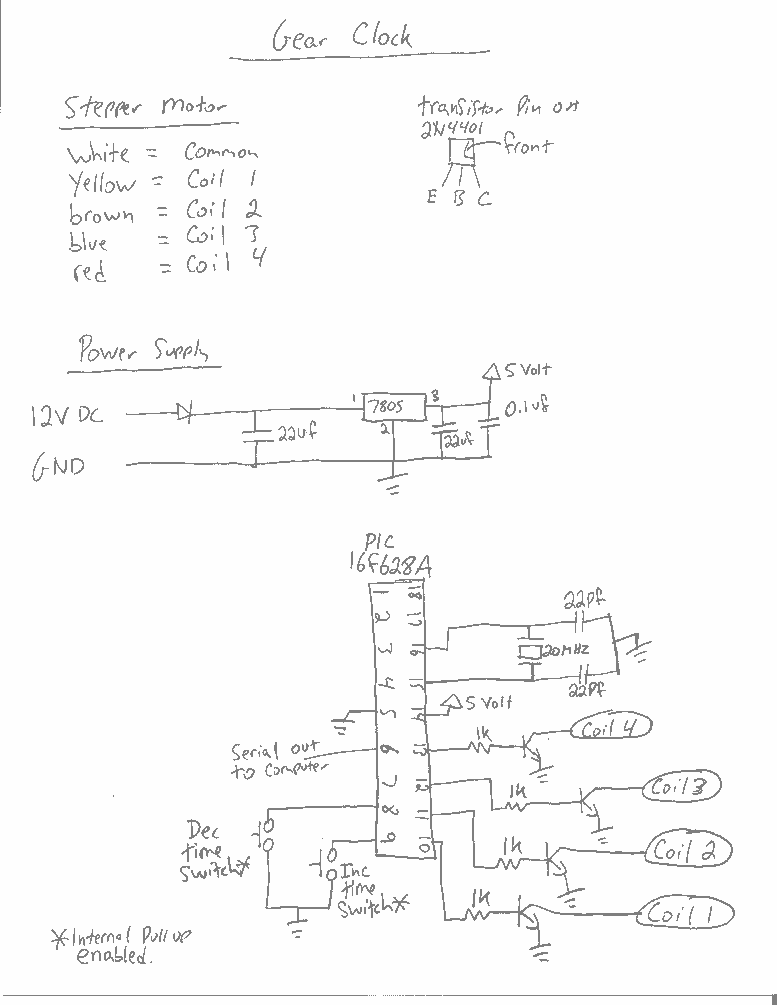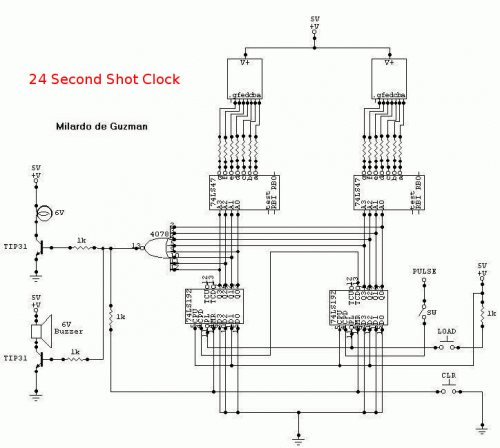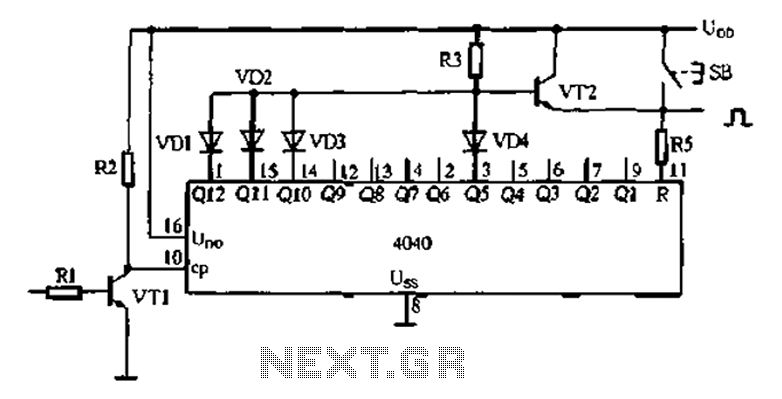
nixie clock
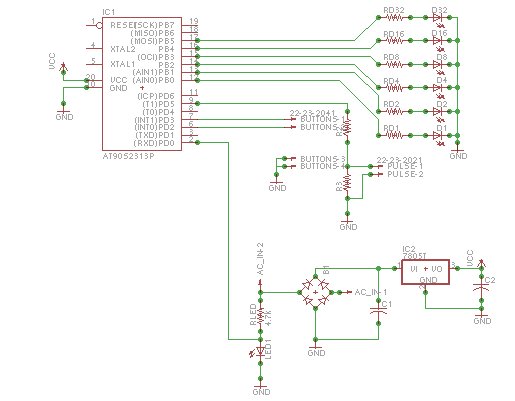
One of the random devices found in a basement was an HP frequency counter. It is robustly built, functions perfectly, and the manual includes a complete parts list, circuit diagram, and theory of operation. The counter features a 4-digit display with frequency intervals of 1 second, capable of measuring frequencies up to several megahertz. It utilizes a nixie tube display, which is appealing due to its retro aesthetic. Nixie tube clocks are popular among hobbyists, providing a warm glow absent in conventional LED clocks. However, nixie tube designs require high-voltage components that can be difficult to source. The frequency counter has an integrated driver circuit, allowing for arbitrary time settings by counting up. The first two digits represent hours, while the last two represent minutes. The timer increments every minute and requires 41 pulses to transition from 11:59 to the next hour. After 24 hours, the timer resets from 2400 to 0000. Some counters have a reset function, but this specific counter would need modification for that capability. A counting method can roll the clock back to zero in about 2 minutes at 60 Hz. The implementation uses an ATTiny 2313 microcontroller, which features 18 general-purpose I/O pins and 2k of memory, providing more than enough resources for the project. Two lines are allocated for push buttons to set hours and minutes, one for pulsing the counter, and another for receiving the 60 Hz signal from the outlet. One port block is configured to output seconds, allowing for a true-binary representation of seconds with six LEDs. The hardware design is straightforward; the only component not already available was the power supply. Since the time is derived from the 60 Hz line signal, a wall wart with AC output was necessary. While AC-only transformers are rare, converting a DC output wall wart into an AC one by bypassing rectification circuitry is simple. A 4.5-volt transformer from an obsolete CD player was repurposed. Disassembling the transformer involves cutting through the casing, typically glued together, to access the internals, which can be hazardous if not handled properly.
The HP frequency counter serves as a versatile device, offering both frequency measurement and timekeeping functionalities. The integration of a nixie tube display not only enhances the aesthetic appeal but also aligns with the vintage electronics theme embraced by many hobbyists. The design allows for intuitive time setting through push buttons, while the microcontroller efficiently manages the timing and display functions. The use of a 60 Hz signal from the AC power line simplifies the timing mechanism, eliminating the need for a dedicated oscillator circuit.
The ATTiny 2313 microcontroller, despite being over-spec for this application, provides ample I/O capabilities for future expansions or additional features, such as alarm functions or more complex timekeeping features. The binary representation of seconds using LEDs offers a visual cue for real-time tracking, enhancing user interaction with the device.
The power supply modification demonstrates an innovative approach to repurposing existing components, emphasizing sustainability in electronics projects. However, caution is advised during the disassembly of transformers, as high voltages can pose serious risks. Overall, this project not only highlights the practical application of electronics but also showcases the creative potential of repurposing vintage technology in modern projects.One of the many random devices I`ve found in my sometimes frightening basement was an HP frequency counter. The thing is built like a rock, still works perfectly and the manual contains full parts list, a complete circuit diagram and a description of the theory of operation.
The counter is a 4 digit counter with. 1 or 1 second frequency intervals good to up to several megahertz and a nixie tube display. This last bit is what caught my eye. Nixie tube clocks, like binary clocks, are something of a staple of the tinkering community. The nixie tube provides a warm glowing warming glow not present in conventional LED based clocks, and just ooze retro-geek style. The downside of the nixie tube design is that it requires a large number of high voltage components which can be hard to get.
The nixie tube counter has the driver circuit built in, and it occurred to me that I could set the clock to an arbitrary time by simply counting up. This also leaves me with a perfectly good (and potentially useful) frequency counter. The idea is simple. The first two digits are the hours, the last two are minutes. Every minute, pulse the timer and it will go up by 1. Every hour (when the time is, for instance, 11:59), send 41 pulses and the timer will count up to the next hour.
Every 24 hours, count up from 2400 to 0000 and you roll back to midnight. Some counters have a reset function, so going from 2400 is just a matter of pulsing another port, but this counter would have required modification to be able to do that, and since it only has four digits available the count up method can be used to roll the clock to zero in about 2 minutes at 60hz. The implementation uses my favorite microcontroller, the ATTiny 2313. This uC has 18 general purpose I/O pins (14 more than required) and a "generous" 2k of memory. Complete overkill for this project, but it`s the only chip I had on hand, and the one I have the most experience with.
Two lines are dedicated to push buttons to set the hour and the minute, another is used to pulse the counter, and a fourth is used to get the 60 Hz signal from the outlet. Since it took only a single line of code to do (benefit of memory mapped I/O), I set one of the port blocks to output the seconds, so wiring up 6 LEDs gives the true-binary representation of the number of seconds.
The hardware design was also simple. The power supply was the only part I didn`t have in my collection. Since I was getting the time from the 60 Hz line signal, an AC output wallwart instead of a typically rectified and filtered DC supply was needed. AC only transformers are not common (but occasionally used by PC speakers), but it`s trivial to convert a DC output wallwart into an AC one by bypassing the rectification circuitry.
I used a 4. 5 volt transformer that came with a long dead CD player. Disassembling the transformer is fairly easy. They`re usually glued together, some have a few tabs, but generally sawing through one of the corners along the seam (attack the end that has the 110vac plug coming out, as the other end generally has rectification circuitry that can be damaged) allows levering open the case and access to the (potentially lethal) innards. If it`s plugged in at this time, you may die. This transformer gave out 🔗 External reference
The HP frequency counter serves as a versatile device, offering both frequency measurement and timekeeping functionalities. The integration of a nixie tube display not only enhances the aesthetic appeal but also aligns with the vintage electronics theme embraced by many hobbyists. The design allows for intuitive time setting through push buttons, while the microcontroller efficiently manages the timing and display functions. The use of a 60 Hz signal from the AC power line simplifies the timing mechanism, eliminating the need for a dedicated oscillator circuit.
The ATTiny 2313 microcontroller, despite being over-spec for this application, provides ample I/O capabilities for future expansions or additional features, such as alarm functions or more complex timekeeping features. The binary representation of seconds using LEDs offers a visual cue for real-time tracking, enhancing user interaction with the device.
The power supply modification demonstrates an innovative approach to repurposing existing components, emphasizing sustainability in electronics projects. However, caution is advised during the disassembly of transformers, as high voltages can pose serious risks. Overall, this project not only highlights the practical application of electronics but also showcases the creative potential of repurposing vintage technology in modern projects.One of the many random devices I`ve found in my sometimes frightening basement was an HP frequency counter. The thing is built like a rock, still works perfectly and the manual contains full parts list, a complete circuit diagram and a description of the theory of operation.
The counter is a 4 digit counter with. 1 or 1 second frequency intervals good to up to several megahertz and a nixie tube display. This last bit is what caught my eye. Nixie tube clocks, like binary clocks, are something of a staple of the tinkering community. The nixie tube provides a warm glowing warming glow not present in conventional LED based clocks, and just ooze retro-geek style. The downside of the nixie tube design is that it requires a large number of high voltage components which can be hard to get.
The nixie tube counter has the driver circuit built in, and it occurred to me that I could set the clock to an arbitrary time by simply counting up. This also leaves me with a perfectly good (and potentially useful) frequency counter. The idea is simple. The first two digits are the hours, the last two are minutes. Every minute, pulse the timer and it will go up by 1. Every hour (when the time is, for instance, 11:59), send 41 pulses and the timer will count up to the next hour.
Every 24 hours, count up from 2400 to 0000 and you roll back to midnight. Some counters have a reset function, so going from 2400 is just a matter of pulsing another port, but this counter would have required modification to be able to do that, and since it only has four digits available the count up method can be used to roll the clock to zero in about 2 minutes at 60hz. The implementation uses my favorite microcontroller, the ATTiny 2313. This uC has 18 general purpose I/O pins (14 more than required) and a "generous" 2k of memory. Complete overkill for this project, but it`s the only chip I had on hand, and the one I have the most experience with.
Two lines are dedicated to push buttons to set the hour and the minute, another is used to pulse the counter, and a fourth is used to get the 60 Hz signal from the outlet. Since it took only a single line of code to do (benefit of memory mapped I/O), I set one of the port blocks to output the seconds, so wiring up 6 LEDs gives the true-binary representation of the number of seconds.
The hardware design was also simple. The power supply was the only part I didn`t have in my collection. Since I was getting the time from the 60 Hz line signal, an AC output wallwart instead of a typically rectified and filtered DC supply was needed. AC only transformers are not common (but occasionally used by PC speakers), but it`s trivial to convert a DC output wallwart into an AC one by bypassing the rectification circuitry.
I used a 4. 5 volt transformer that came with a long dead CD player. Disassembling the transformer is fairly easy. They`re usually glued together, some have a few tabs, but generally sawing through one of the corners along the seam (attack the end that has the 110vac plug coming out, as the other end generally has rectification circuitry that can be damaged) allows levering open the case and access to the (potentially lethal) innards. If it`s plugged in at this time, you may die. This transformer gave out 🔗 External reference
